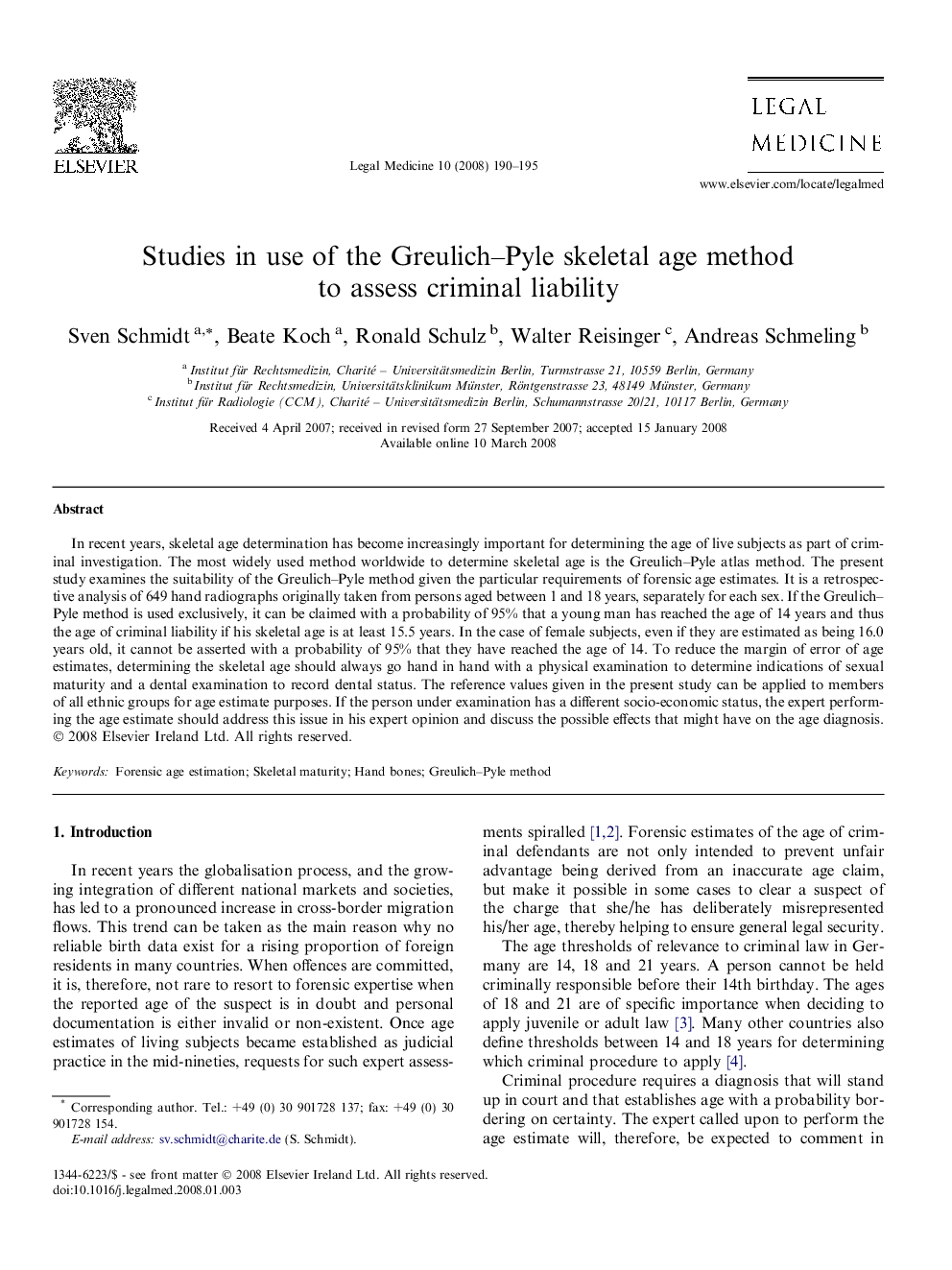| Article ID | Journal | Published Year | Pages | File Type |
|---|---|---|---|---|
| 104239 | Legal Medicine | 2008 | 6 Pages |
In recent years, skeletal age determination has become increasingly important for determining the age of live subjects as part of criminal investigation. The most widely used method worldwide to determine skeletal age is the Greulich–Pyle atlas method. The present study examines the suitability of the Greulich–Pyle method given the particular requirements of forensic age estimates. It is a retrospective analysis of 649 hand radiographs originally taken from persons aged between 1 and 18 years, separately for each sex. If the Greulich–Pyle method is used exclusively, it can be claimed with a probability of 95% that a young man has reached the age of 14 years and thus the age of criminal liability if his skeletal age is at least 15.5 years. In the case of female subjects, even if they are estimated as being 16.0 years old, it cannot be asserted with a probability of 95% that they have reached the age of 14. To reduce the margin of error of age estimates, determining the skeletal age should always go hand in hand with a physical examination to determine indications of sexual maturity and a dental examination to record dental status. The reference values given in the present study can be applied to members of all ethnic groups for age estimate purposes. If the person under examination has a different socio-economic status, the expert performing the age estimate should address this issue in his expert opinion and discuss the possible effects that might have on the age diagnosis.
